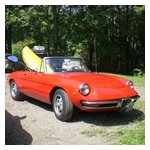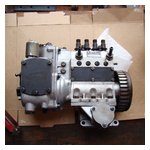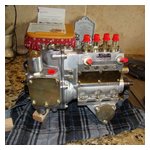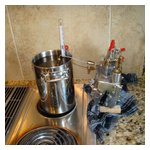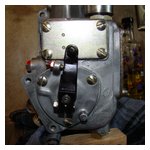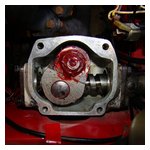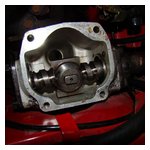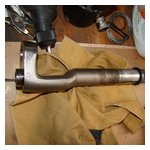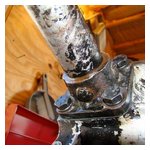|
|||
|
Successful dealings with Spica pumps and steering boxes By Steve Thomas It has been tough, opening my email and hearing about all of the fun the New England Alfisti were having while knowing that my ’69 Spider’s parts were occupying all of the workbench space in the garage. Well, the Spider is fixed (mostly) and back on the road. New brakes, new front wheel bearings, Wes Ingram Spica pump, Wes Ingram throttle bodies, sealed steering box, radiator shroud, tappets adjusted, belts, plugs and fluids, all done! Now if only it would stop raining… Lesson One – Don’t Wait Until Mid-February to Disassemble the Car! But give me a break — I had lots of excuses, it did run, and I could limp through another season, and it wasn’t going to be cheap. The drip under the steering box and memories of exhaust header burned gear oil wafting around the passenger compartment finally got me moving. Regardless, 60 days in Wes’s shop is what it takes to get a rebuilt pump. Lesson Two – Oil is Lighter Than Water! After the Spica pump was on its way to Wes, it was time to tackle the leaky steering box. Discussions with a couple of our suppliers last year disclosed that there were two different seals used on the lower end of my Burman steering box. To be prepared, I bought both. After pulling the Pitman arm and cleaning things up, I learned two things: My seal was not either of the ones I purchased; it was just a simple “O” ring, and it was not leaking. My leak was coming from higher up, and the box had to come out of the car. When I pulled the rocker shaft (the splined shaft that sticks out of the bottom of the steering box) about 1/4 cup of water came out with the old oil. I have no clue how it got in the box, and worse, short of pulling the rocker shaft (or turning the car upside down), I have no suggestions on how to get any water out of a steering box. You cannot get a hose far enough down to suck out the bottom of the steering box. Well, forewarned and all… It turned out that the primary leak was at an inaccessible seal between the outer steering column and a flange bolted to the back side of the steering box. At the factory, the flange was secured in place by four studs welded to the outer steering column after assembly. Disassembly would require machining these studs out. Shortening the story substantially, since the seal cannot be replaced outside of a machine shop and the design is supposed to stop any movement, I silver soldered the flange to the outer steering column and reassembled the unit. Hints for working on the Burman steering box:
Lesson Three – Wes Ingram is a Ruddy Genius and Very Helpful! Okay, so we all knew this already, but my dealings with Wes, Rita and Herb were a real treat and very informative. Wes provided information and recommendations on not only my Spica system but my ignition system, induction system and exhaust as well. He made recommendations on what not to buy as well as what to buy. Based upon my engine configuration and driving habits, we selected a HP7000 (for RPM) and they tuned it to match the cams in my engine. Wes pointed out that in early 1969 ALFA had made an error in the pump timing and told me how to check it. It turned out that my car had the error, but the dealer had corrected the timing mark on the crank pulley. Hints for getting your pump rebuilt:
Well, good luck and good driving!
|
|||
|
(Click on the thumbnails below for a larger view, and then
|
|||
|
|
|||
|

